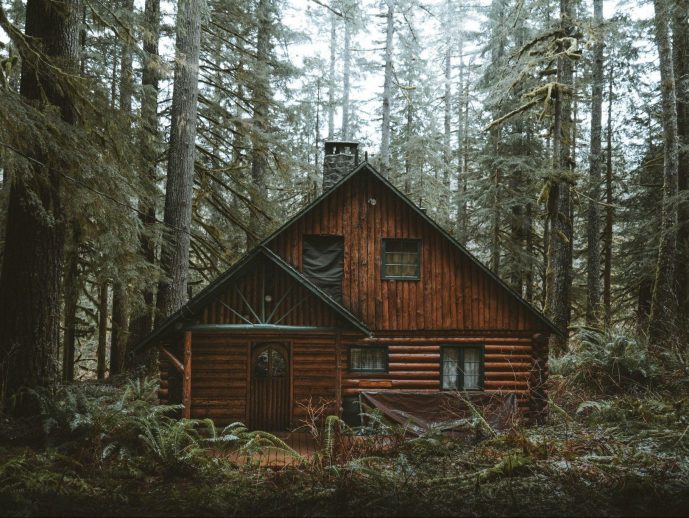Categories more
- Adventures (17)
- Arts / Collectables (15)
- Automotive (37)
- Aviation (11)
- Bath, Body, & Health (77)
- Children (6)
- Cigars / Spirits (32)
- Cuisine (16)
- Design/Architecture (22)
- Electronics (13)
- Entertainment (4)
- Event Planning (5)
- Fashion (46)
- Finance (9)
- Gifts / Misc (6)
- Home Decor (45)
- Jewelry (41)
- Pets (3)
- Philanthropy (1)
- Real Estate (16)
- Services (23)
- Sports / Golf (14)
- Vacation / Travel (60)
- Watches / Pens (15)
- Wines / Vines (24)
- Yachting / Boating (17)
Refurbishing Your Space: Log Home Restoration Contractors
Published
06/01/2024Log homes require special maintenance and restoration services that only specialized contractors can provide, so finding one with the necessary expertise is vital for protecting your investment for generations to come.
Wood rot can be a costly repair issue for log home owners and must be assessed carefully prior to making a decision on repair costs. Before making your choice, it is vital to determine how extensive the rot is before making an assessment decision.
Experience
Experience is of utmost importance when hiring a log home restoration contractor, not only the number of years in business but also their knowledge about log construction, types of wood used to construct the logs hewn into place and sealed together, along with proper care for these unique structures.
Surface preparation is the initial step of log home restoration. This involves stripping and cleaning logs and decking as well as media blasting to remove existing finishes from both. It is extremely important that this step be carried out correctly.
Once the surface has been prepared, the next steps should involve caulking and chinking before staining. Each process requires appropriate techniques and preparation; an experienced contractor should explain them so you can comprehend them fully. You can click the link: https://www.thespruce.com/how-to-caulk-like-a-professional to learn more.
References
When searching for a contractor to build, repair, or renovate your log home or cabin, don't be shy about asking past clients for references and references from past projects. Be sure to inquire about both the quality of their work as well as their response when issues arose on site.
Log structures are uniquely complex structures, requiring specific knowledge that general contractors might lack.
An effective way of evaluating a prospective log home building or renovation company is by reading reviews on their website and visiting sites of completed projects to see for yourself. Also ask for references from suppliers and bankers as a measure of financial stability from potential contractors.
Some contractors suggest using pressure washers and chemicals to strip old layers of stain off of your log home before applying a fresh coating, however this can result in early failure of that new coat within 1 - 2 years and cause the wood to shrink over time, thus diminishing its insulation value.
Licenses
When hiring a home improvement contractor to build or maintain your log cabin, be sure they possess an active contractor’s license. Finding a company like the one found at https://www.superiorlogrestorations.ca/ with years of experience and an impeccable track record for providing quality services will help turn your dream into a reality. But it is important to choose a qualified professional for this work.
Building, restoring and maintaining log homes requires unique skills and dedication from those entrusted with these one-of-a-kind structures. When selecting a restoration specialist for these unique homes, seek one who understands their value while having extensive general construction knowledge as well as log home building/maintenance experience and has a genuine passion for what they do.
Consideration should also be given when selecting a log home restoration professional on their ability to repair structural damage to your log structure, including chinking and caulking services.
Chinking refers to filling gaps between logs with materials to form an airtight seal - traditionally done using mud cement, though more modern flexible engineered chinking systems may be utilized instead. You can click here to learn more about mud cement.
Insurance
When searching for a log home restoration contractor, it's essential that they carry insurance. You can visit this site to learn more. Log homes tend to be more expensive than traditional houses and often require specialist construction crews and materials; insurance companies may be reluctant to cover such high costs and repairs that often necessitate insurance policies on them due to potential risk issues.
To prevent an unexpected disaster from arising, select an agent experienced with insuring log and timber homes who has experience working with contractors to obtain appropriate coverage.
Builder's risk policies provide coverage for construction materials, but are no replacement for homeowner's policies once your cabin is completed. Be sure to have enough dwelling and extended replacement value insurance in place so that if a disaster strikes you can rebuild fully if necessary - as a general guideline it should include logs, foundation, reconstruction costs and full cost coverage in one policy.
Log home owners should also consider investing in a routine maintenance plan for their log home, in addition to insurance.
A regular schedule of cleaning, sealing and chinking will help prevent damage and premature aging while regular visual inspections will help identify any problems developing that could cause interior damage such as leaky gutters or external spigots leaking; checking gutters or external spigots for leaks could prevent issues from developing that could potentially ruin its interior aesthetics.
















